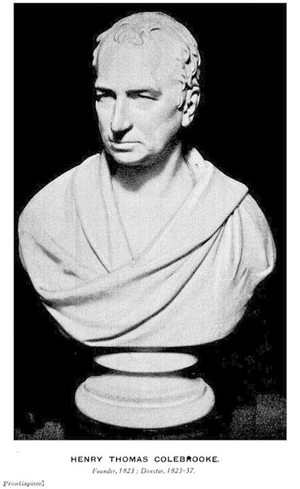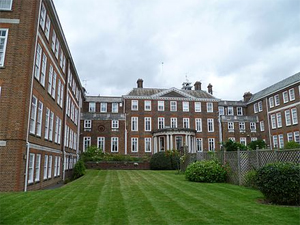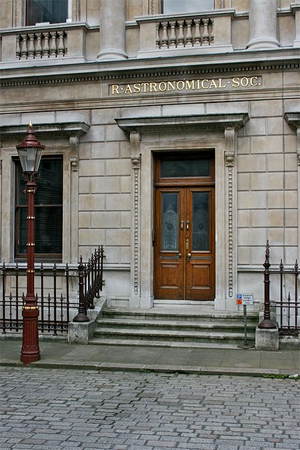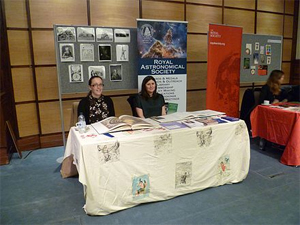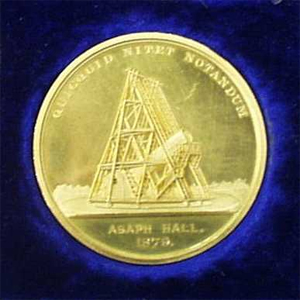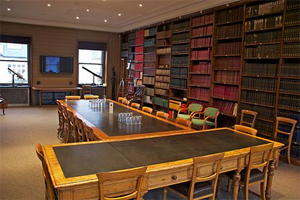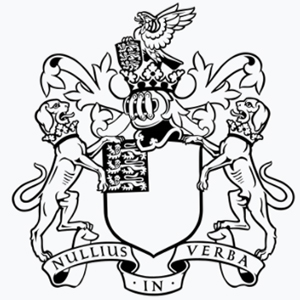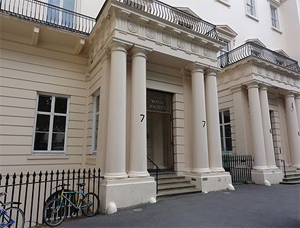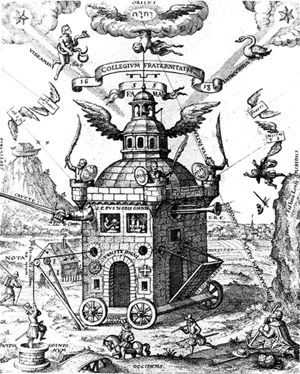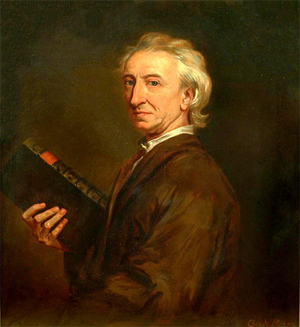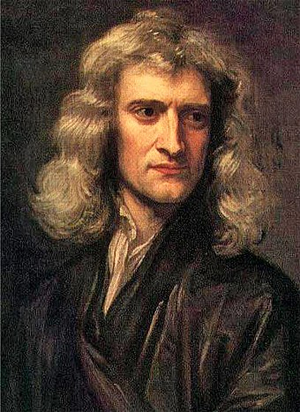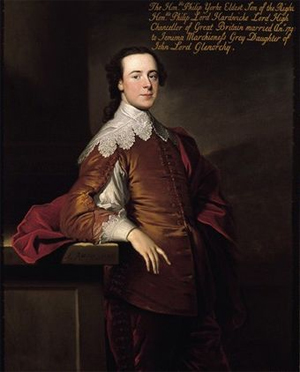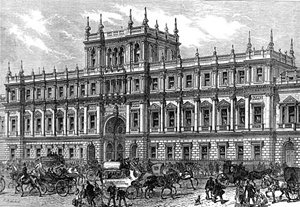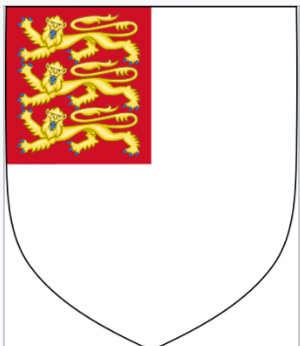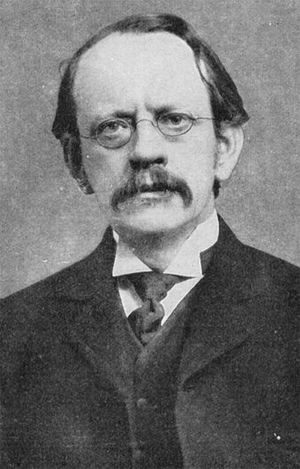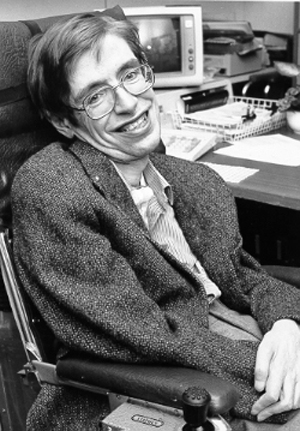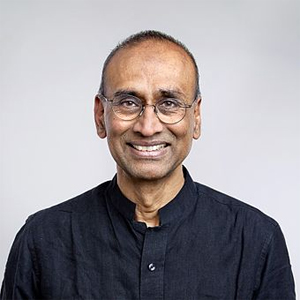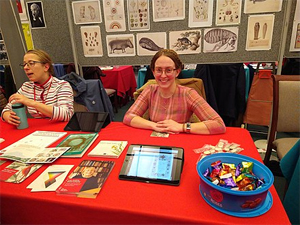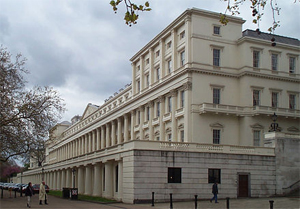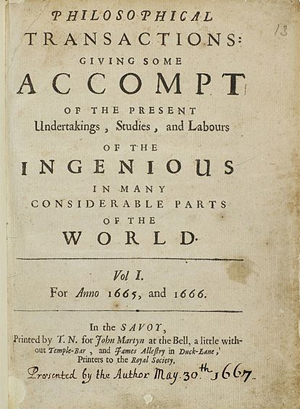Buddha or Karl Marx
by Dr. Babasaheb Ambedkar
Writings and Speeches, Vol. 3
In his rallying slogans, Ambedkar spoke of liberty, equality and fraternity but emphasised that these were not taken from the French but from Buddhist sources. He said, "Let no one however say that I have borrowed my philosophy from the French Revolution. I have not. My philosophy has roots in religion and not in political science. I have derived them from the teachings of my master, the Buddha"62. The basic philosophy and ideas about his "master, the Buddha" had come to India in the late 19th and early 20th centuries through primarily Sinhalese sources which influenced the European and Indian discovery of Buddhism that Allen recorded. And it was these that eventually became the reading material on Buddhism for Ambedkar.
-- Dharmapala and the Tamil downtrodden, Excerpt from White Sahibs, Brown Sahibs: Tracking Dharmapala, by Susantha Goonatilake
Contents
I. THE CREED OF THE BUDDHA
II. THE ORIGINAL CREED OF KARL MARX
III. WHAT SURVIVES OF THE MARXIAN CREED
IV. COMPARISON BETWEEN BUDDHA AND KARL MARX
V. THE MEANS
VI. EVALUATION OF MEANS
VII. WHOSE MEANS ARE MORE EFFICACIOUS
VIII. WITHERING AWAY OF THE STATE
Editorial Note in the source publication: Dr. Babasaheb Ambedkar: Writings and Speeches, Vol. 3:
The Committee found three different typed copies of an essay on Buddha and Karl Marx in loose sheets, two of which have corrections in the author’s own handwriting. After scrutinising these, this essay is compiled incorporating the corrections. The essay is divided into sub-topics as shown below: Introduction
1. The Creed of the Buddha
2. The Original Creed of Karl Marx
3. What survives of the Marxian Creed?
4. Comparison between Buddha and Karl Marx
5. Means
6. Evaluation of Means
7. Whose Means are More Efficacious?
8. Withering away of the State
— Editors.
A comparison between Karl Marx and Buddha may be regarded as a joke. There need be no surprise in this. Marx and Buddha are divided by 2381 years. Buddha was born in 563 BC and Karl Marx in 1818 AD. Karl Marx is supposed to be the architect of a new ideology-polity, a new Economic system. The Buddha on the other hand is believed to be no more than the founder of a religion, which has no relation to politics or economics. The heading of this essay "Buddha or Karl Marx" which suggests either a comparison or a contrast between two such personalities divided by such a lengthy span of time and occupied with different fields of thought is sure to sound odd. The Marxists may easily laugh at it and may ridicule the very idea of treating Marx and Buddha on the same level. Marx so modern and Buddha so ancient! The Marxists may say that the Buddha as compared to their master must be just primitive. What comparison can there be between two such persons? What could a Marxist learn from the Buddha? What can Buddha teach a Marxist? None-the-less a comparison between the two is a attractive and instructive. Having read both and being interested in the ideology of both, a comparison between them just forces itself on me. If the Marxists keep back their prejudices and study the Buddha and understand what he stood for, I feel sure that they will change their attitude. It is of course too much to expect that having been determined to scoff at the Buddha they will remain to pray. But this much can he said, that they will realise that there is something in the Buddha's teachings which is worth their while to take note of.
I. THE CREED OF THE BUDDHA
The Buddha is generally associated with the doctrine of Ahimsa. That is taken to be the be-all and end-all of his teachings. Hardly any one knows that what the Buddha taught is something very vast: far beyond Ahimsa. It is therefore necessary to set out in detail his tenets. I enumerate them below as I have understood them from my reading of the Tripitaka :
1. Religion is necessary for a free Society.
2. Not every Religion is worth having. 3. Religion must relate to facts of life and not to theories and speculations about God, or Soul or Heaven or Earth.
4. It is wrong to make God the centre of Religion.
5. It is wrong to make salvation of the soul as the centre of Religion.
6. It is wrong to make animal sacrifices to be the centre of religion.
7. Real Religion lives in the heart of man and not in the Shastras.
8. Man and morality must be the centre of religion. If not, Religion is a cruel superstition.
9. It is not enough for Morality to be the ideal of life. Since there is no God it must become the Jaw of life. 10. The function of Religion is to reconstruct the world and to make it happy and not to explain its origin or its end.
11. That the unhappiness in the world is due to conflict of interest and the only way to solve it is to follow the Ashtanga Marga.
12. That private ownership of property brings power to one class and sorrow to another.
13. That it is necessary for the good of Society that this sorrow be removed by removing its cause.
14. All human beings are equal.
15. Worth and not birth is the measure of man.
16. What is important is high ideals and not noble birth.
17. Maitri or fellowship towards all must never be abandoned. One owes it even to one's enemy.
18. Every one has a right to learn. Learning is as necessary for man to live as food is.
19. Learning without character is dangerous.
20. Nothing is infallible. Nothing is binding forever. Every thing is subject to inquiry and examination. 21. Nothing is final.
22. Every thing is subject to the law of causation.
23. Nothing is permanent or sanatan. Every thing is subject to change. Being is always becoming.
24. War is wrong unless it is for truth and justice.
25. The victor has duties towards the vanquished.
This is the creed of the Buddha in a summary form. How ancient hut how fresh! How wide and how deep are his teachings!
II. THE ORIGINAL CREED OF KARL MARX
Let us now turn to the creed of Karl Marx as originally propounded by him. Karl Marx is no doubt the father of modern socialism or Communism but he was not interested merely in propounding the theory of Socialism. That had been done long before him by others. Marx was more interested in proving that his Socialism was scientific. His crusade was as much against the capitalists as it was against those whom he called the Utopian Socialists. He disliked them both. It is necessary to note this point because Marx attached the greatest importance to the scientific character of his Socialism. All the doctrines which Marx propounded had no other purpose than to establish his contention that his brand of Socialism was scientific and not Utopian.
By scientific socialism what Karl Marx meant was that his brand of socialism was inevitable and inescapable and that society was moving towards it and that nothing could prevent its march. It is to prove this contention of his that Marx principally laboured. Marx's contention rested on the following theses. They were:—
(i) That the purpose of philosophy is to reconstruct the world and not to explain the origin of the universe.
(ii) That the force which shapes the course of history are primarily economic.
(iii) That society is divided into two classes, owners and workers. (iv) That there is always a class conflict going on between the two classes.
(v) That the workers are exploited by the owners who misappropriate the surplus value, which is the result of the workers' labour.
(vi) That this exploitation can be put an end to by nationalisation of the instruments of production i.e. abolition of private property.
(vii) That this exploitation is leading to greater and greater impoverishment of the workers.
(viii) That this growing impoverishment of the workers is resulting in a revolutionary spirit among the workers and the conversion of the class conflict into a class struggle.
(ix) That as the workers outnumber the owners, the workers are bound to capture the State and establish their rule, which he called the dictatorship of the proletariat.
(x) These factors are irresistible and therefore socialism is inevitable.
I hope I have reported correctly the propositions, which formed the original basis of Marxian Socialism.
III. WHAT SURVIVES OF THE MARXIAN CREED
Before making a comparison between the ideologies of the Buddha and Karl Marx it is necessary to note how much of this original corpus of the Marxian creed has survived; how much has been disproved by history and how much has been demolished by his opponents.
The Marxian Creed was propounded sometime in the middle of the nineteenth century. Since then it has been subjected to much criticism. As a result of this criticism much of the ideological structure raised by Karl Marx has broken to pieces. There is hardly any doubt that Marxist claim that his socialism was inevitable has been completely disproved. The dictatorship of the Proletariat was first established in 1917 in one country after a period of something like seventy years after the publication of his Das Capital the gospel of socialism. Even when the Communism—which is another name for the dictatorship of the Proletariat—came to Russia, it did not come as something inevitable without any kind of human effort. There was a revolution and much deliberate planning had to be done with a lot of violence and blood shed, before it could step into Russia. The rest of the world is still waiting for coming of the Proletarian Dictatorship. Apart from this general falsification of the Marxian thesis that Socialism is inevitable, many of the other propositions stated in the lists have also been demolished both by logic as well as by experience. Nobody now I accepts the economic interpretation of history as the only explanation of history. Nobody accepts that the proletariat has been progressively pauperised. And the same is true about his other premises.
What remains of the Karl Marx is a residue of fire, small but still very important. The residue in my view consists of four items:
(i) The function of philosophy is to reconstruct the world and not to waste its time in explaining the origin of the world.
(ii) That there is a conflict of interest between class and class.
(iii) That private ownership of property brings power to one class and sorrow to another through exploitation.
(iv) That it is necessary for the good of society that the sorrow be removed by the abolition of private property.
IV. COMPARISON BETWEEN BUDDHA AND KARL MARX
Taking the points from the Marxian Creed which have survived one may now enter upon a comparison between the Buddha and Karl Marx.
On the first point there is complete agreement between the Buddha and Karl Marx. To show how close is the agreement I quote below a part of the dialogue between Buddha and the Brahmin Potthapada.
"Then, in the same terms, Potthapada asked (the Buddha) each of the following questions:
1. Is the world not eternal?
2. Is the world finite?
3. Is the world infinite?
4. Is the soul the same as the body?
5. Is the soul one thing, and the body another?
6. Does one who has gained the truth live again after death?
7. Does he neither live again, nor not live again, after death? And to each question the exalted one made the same reply: It was this.
"That too, Potthapada, is a matter on which I have expressed no opinion".
28. "But why has the Exalted One expressed no opinion on that?" "(Because) This question is not calculated to profit, it is not concerned with (the Dhamma), it does not redound even to the elements of right conduct, nor to detachment nor to purification from lust, nor to quietude, nor to tranquillisation of heart, nor to real knowledge, nor to the insight (of the higher stages of the Path), nor to Nirvana. Therefore it is that I express no opinion upon it."
On the second point I give below a quotation from a dialogue between Buddha and Pasenadi King of Kosala:
"Moreover, there is always strife going on between kings, between nobles, between Brahmins, between house holders, between mother and son, between son and father, between brother and sister, between sister and brother, between companion and companion. . ." Although these are the words of Pasenadi, the Buddha did not deny that they formed a true picture of society.
As to the Buddha's own attitude towards class conflict his doctrine of Ashtanga Marga recognises that class conflict exists, and that it is the class conflict which is the cause of misery.
On the third question I quote from the same dialogue of Buddha with Potthapada;
"Then what is it that the Exalted One has determined?" "I have expounded, Potthapada, that sorrow and misery exist! I have expounded, what is the origin of misery. I have expounded what is the cessation of misery. I have expounded what is [the] method by which one may reach the cessation of misery."
30. "And why has the Exalted One put forth a statement as to that?"
"Because that question, Potthapada, is calculated to profit, is concerned with the Dhamma, redounds to the beginnings of right conduct, to detachment, to purification from lusts, to quietude, to tranquillisation of heart, to real knowledge, to the insight of the higher stages of the Path and to Nirvana. Therefore is it, Potthapada, that I have put forward a statement as to that."
That language is different, but the meaning is the same. If for misery one reads exploitation, Buddha is not [far] away from Marx.
On the question of private property, the following extract from a dialogue between Buddha and Ananda is very illuminating. In reply to a question by Ananda the Buddha said:
"I have said that avarice is because of possession. Now in what way that is so, Ananda, is to be understood after this manner. Where there is no possession of any sort or kind whatever, by any one or anything, then there being no possession whatever, would there, owing to this cessation of possession, be any appearance of avarice?" "There would not, Lord".
"Wherefore, Ananda, just that is the ground, the basis, the genesis, the cause of avarice, to wit, possession.
31. "I have said that tenacity is the cause [of] possession. Now in what way that is so, Ananda, is to be understood after this manner. Were there no tenacity of any sort or kind whatever shown by any one with respect to any thing, then there being [no tenacity] whatever, would there owing to this cessation of tenacity, be any appearance of possession?" "There would not, Lord."
"Wherefore, Ananda, just that is the ground, the basis, the genesis, the cause of possession, to wit tenacity."
On the fourth point no evidence is necessary. The rules of the Bhikshu Sangh will serve as the best testimony on the subject.
According to the rules, a Bhikku can have private property only in the following eight articles, and no more. These eight articles are: —
1 I
2. } Three robes or pieces of cloth for daily wear.
3. I
4. A girdle for the loins.
5. An alms-bowl.
6. A razor.
7. A needle.
8. A water strainer.
Further a Bhikku was completely forbidden to receive gold or silver for fear that with gold or silver he might buy some thing beside the eight things he is permitted to have.
These rules are far more rigorous than are to be found in communism in Russia.
V. THE MEANS
We must now come to the means. The means of bringing about Communism, which the Buddha propounded, were quite definite. The means can be decided into three parts. Part I consisted in observing the Pancha Silas. The Enlightenment gave birth to a new gospel, which contains the key to the solution of the problem, which was haunting him.
The foundation of the New Gospel is the fact that the world was full of misery and unhappiness. It was [a] fact not merely to be noted but to be regarded as being the first and foremost in any scheme of salvation. The recognition of this fact the Buddha made the starting point of his gospel.
To remove this misery and unhappiness was to him the aim and object of the gospel if it is to serve any useful purpose.
Asking what could be the causes of this misery, the Buddha found that there could be only two.
A part of the misery and unhappiness of man was the result of his own misconduct. To remove this cause of misery, he preached the practice of Panch Sila.
The Panch Sila comprised the following observations: (1) To abstain from destroying or causing destruction of any living things; (2) To abstain from stealing i.e. acquiring or keeping by fraud or violence, the property of another; (3) To Abstain from telling untruth; (4) To abstain from lust; (5) To abstain from intoxicating drinks.
A part of the misery and unhappiness in the world was according to the Buddha the result of man's inequity towards man. How was this inequity to be removed? For the removal of man's inequity towards man the Buddha prescribed the Noble Eight-Fold Path. The elements of the Noble Fight-Fold Path are:
(1) Right views i.e. freedom from superstition: (2) Right aims, high and worthy of the intelligent and earnest men; (3) Right speech, i.e. kindly, open, truthful: (4) Right Conduct, i.e. peaceful, honest and pure; (5) Right livelihood, i.e. causing hurt or injury to no living being; (6) Right perseverance in all the other seven; (7) Right mindfulness, i.e. with a watchful and active mind; and (8) Right contemplation, i.e. earnest thought on the deep mysteries of life.
The aim of the Noble Eight-Fold Path is to establish on earth the kingdom of righteousness, and thereby to banish sorrow and unhappiness from the face of the world.
The third part of the Gospel is the doctrine of Nibbana. The doctrine of Nibbana is an integral part of the doctrine of the Noble Eight-Fold Path. Without Nibbana the realisation of the Eight-Fold Path cannot be accomplished.
The doctrine of Nibbana tells what are the difficulties in the way of the realisation of the Eight-Fold Path.
The chiefs of these difficulties are ten in number. The Buddha called them the Ten Asavas, Fetters or Hindrances.
The first hindrance is the delusion of self. So long as a man is wholly occupied with himself, chasing after every bauble that he vainly thinks will satisfy the cravings of his heart, there is no noble path for him. Only when his eyes have been opened to the fact that he is but a tiny part of a measureless whole, only when he begins to realise how impermanent a thing is his temporary individuality, can he even enter upon this narrow path.
The second is Doubt and Indecision. When a man's eyes are opened to the great mystery of existence, the impermanence of every individuality, he is likely to be assailed by doubt and indecision as to his action. To do or not to do, after all my individuality is impermanent, why do anything are questions which make him indecisive or inactive. But that will not do in life. He must make up his mind to follow the teacher, to accept the truth, and to enter on the struggle, or he will get no further.
The third is dependence on the efficacy of Rites and Ceremonies. No good resolutions, however firm, will lead to anything unless a man gets rid of ritualism: of the belief that any outward acts, any priestly powers, and holy ceremonies, can afford him an assistance of any kind. It is only when he has overcome this hindrance, that men can be said to have fairly entered upon the stream and has a chance sooner or later to win a victory.
The fourth consists of the bodily passions... The fifth is ill will towards other individuals. The sixth is the suppression of the desire for a future life with a material body and the seventh is the desire for a future life in an immaterial world.
The eighth hindrance is Pride, and ninth is self-righteousness. These are failings which it is most difficult for men to overcome, and to which superior minds are peculiarly liable, a Praisaical contempt for those who are less able and less holy than themselves.
The tenth hindrance is ignorance. When all other difficulties are conquered this will even remain, the thorn in the flesh of the wise and good, the last enemy and the bitterest foe of man.
Nibbana consists in overcoming these hindrances to the pursuit of the Noble Eight-Fold Path.
The doctrine of the Noble Eight-Fold Path tells what disposition of the mind which a person should sedulously cultivate. The doctrine of Nibbana tells of the temptation or hindrance which a person should earnestly overcome if he wishes to trade along with the Noble Eight-Fold Path.
The Fourth Part of the new Gospel is the doctrine of Paramitas. The doctrine of Paramitas inculcates the practice of ten virtues in one's daily life.
These are those ten virtues—(1) Panna (2) Sila (3) Nekkhama (4) Dana (5) Virya (6) Khanti (7) Succa (8) Aditthana (9) Metta and (10) Upekkha.
Panna or wisdom is the light that removes the darkness of Avijja, Moha or Nescience. The Panna requires that one must get all his doubts removed by questioning those wiser than him self, associate with the wise, and cultivate the different arts and sciences which help to develop the mind.
Sila is moral temperament, the disposition not to do evil, and the disposition to do good; to be ashamed of doing wrong. To avoid doing evil for fear of punishment is Sila. Sila means fear of doing wrong. Nekkhama is renunciation of the pleasures of the world. Dana means the giving of one's possessions, blood and limbs and even one's life for the good of the others without expecting anything in return.
Virya is right endeavour. It is doing with all your might, with thought never turning back, whatever you have undertaken to do.
Khanti is forbearance. Not to meet hatred by hatred is the essence of it. For hatred is not appeased by hatred. It is appeased only by forbearance.
Succa is truth. An aspirant for Buddha never speaks a lie. His speech is truth and nothing but truth.
Aditthana is resolute determination to reach the goal. Metta is fellow feeling extending to all beings, foe and friend, beast and man.
Upekka is detachment as distinguished from indifference. It is a state of mind where there is neither like nor dislike. Remaining unmoved by the result and yet engaged in the pursuit of it.
These virtues one must practice to his utmost capacity. That is why they are called Paramitas (States of Perfection).
Such is the gospel the Buddha enunciated as a result of his enlightenment to end the sorrow and misery in the world.
It is clear that the means adopted by the Buddha were to convert a man by changing his moral disposition to follow the path voluntarily.
The means adopted by the Communists are equally clear, short and swift. They are (1) Violence and (2) Dictatorship of the Proletariat.
The Communists say that there are the only two means of establishing communism. The first is violence. Nothing short of it will suffice to break up the existing system. The other is dictatorship of the proletariat. Nothing short of it will suffice to continue the new system.
It is now clear what are the similarities and differences between Buddha and Karl Marx. The differences are about the means. The end is common to both.

